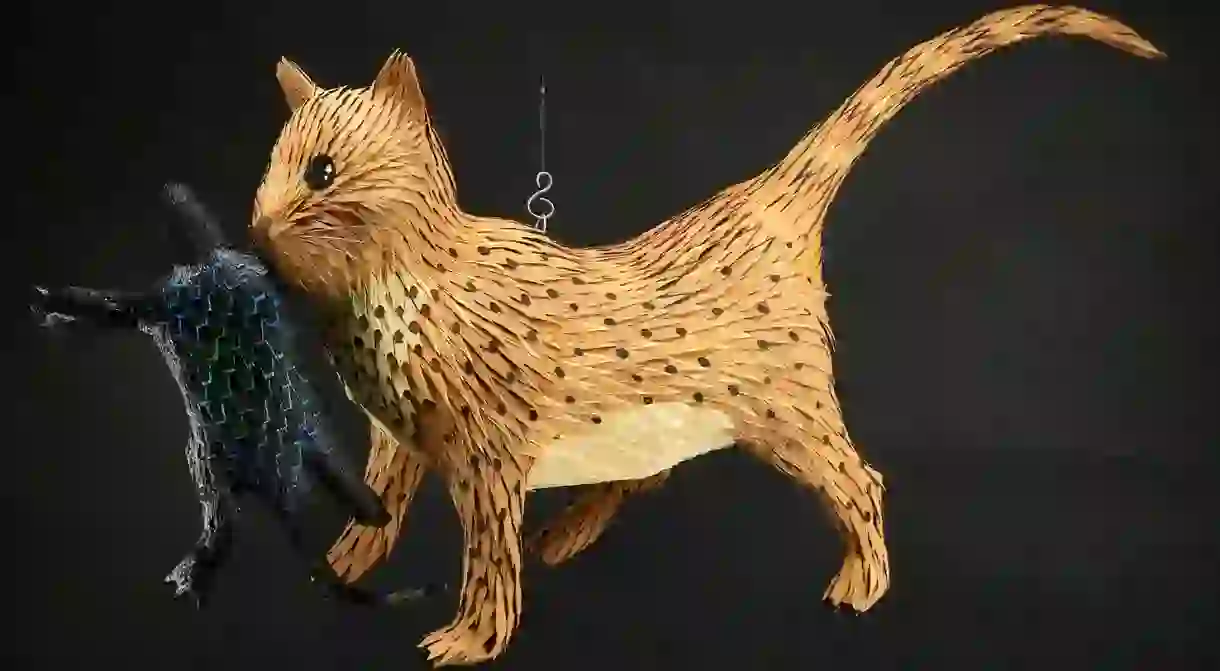Hieronymus Bosch's Otherworldly Creatures Are Reimagined as Piñatas

In his latest sculptural series, Los Angeles-based artist Roberto Benavidez reimagines Hieronymus Bosch’s whimsical creatures as life-sized piñatas.
The Garden of Earthly Delights (1515) remains one of the most captivating paintings in art history. Housed within the Museo del Prado in Madrid, the Netherlandish painter’s magnum opus has weathered the centuries due to its timeless detail — from curious hybrid creatures to otherworldly vessels.
Five hundred years on, Bosch’s beasts serve as the inspiration for a new series by Benavidez, a self-proclaimed “half-breed, South Texan, queer, figurative sculptor specializing in the piñata form.”

As it turns out, the pairing of a Mexican party object with fine art from the Northern Renaissance is unexpectedly harmonious.
The piñata is believed to have originated in China, brought to Spain via Marco Polo and subsequently infused into Mexican culture. In Mexican Catholicism, the piñata came to bear seven points representing the deadly sins. Blindfolded, we swing at our temptations guided only by faith.
“Sin is inherent in both the Bosch painting and the piñata, so to me it was a perfect pairing,” Benavidez told Hyperallergic in an interview. “I like that my work is a blend of both Mexican and European art forms, which in a way represents who I am.”

Benavidez’s piñatas lend, quite literally, a new dimension to the Netherlandish artist’s minute creations, magnifying their forms in an unusual medium.
“I have always admired and gravitated towards old painting techniques,” the artist continued, to Hyperallergic. “The oddness of the creatures and people, the odd perspective — they were captivating. As a sculptor, the challenge of taking these odd 2D forms and recreating [them] into 3D is the most fulfilling challenge for me right now.”
















